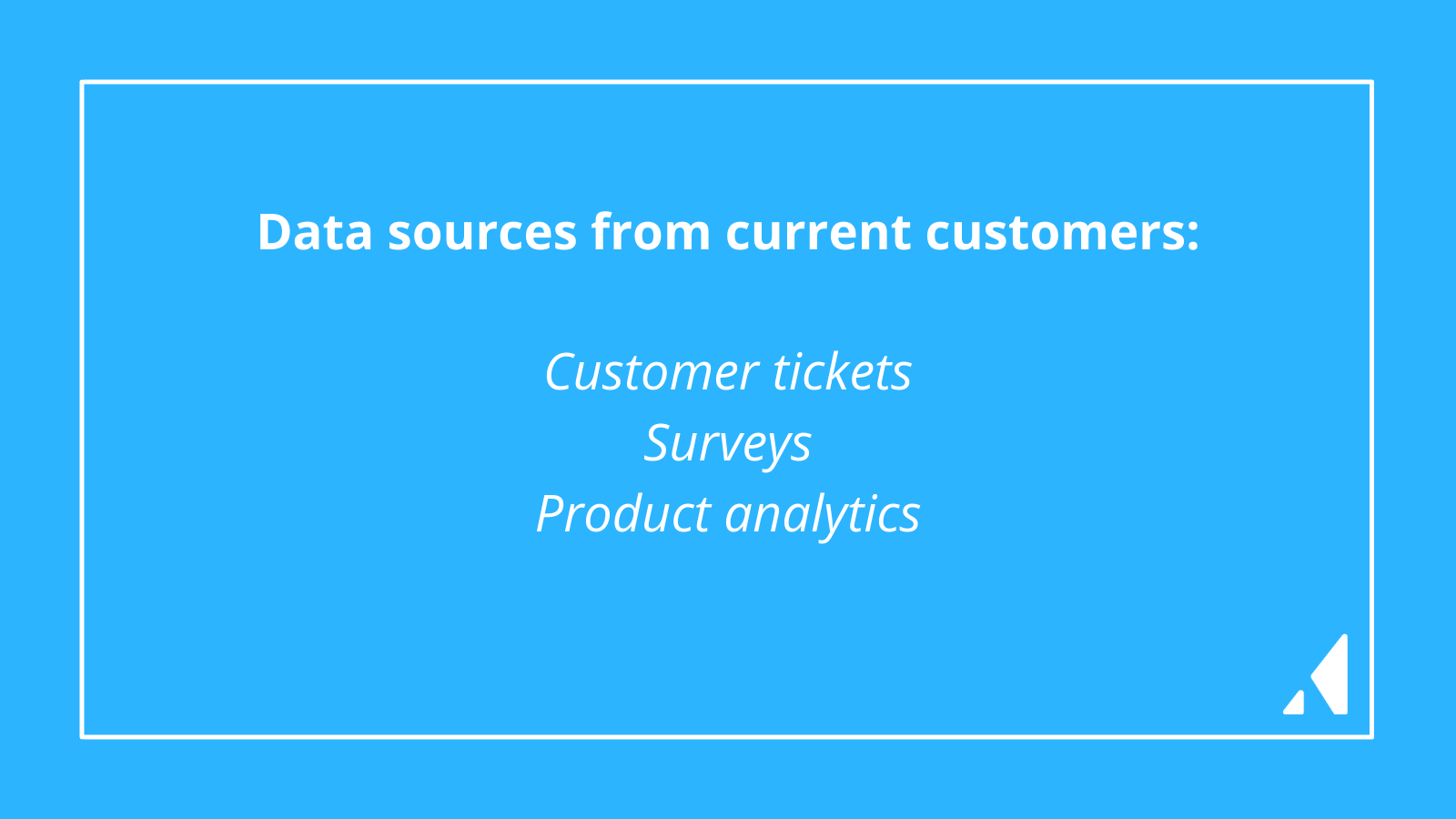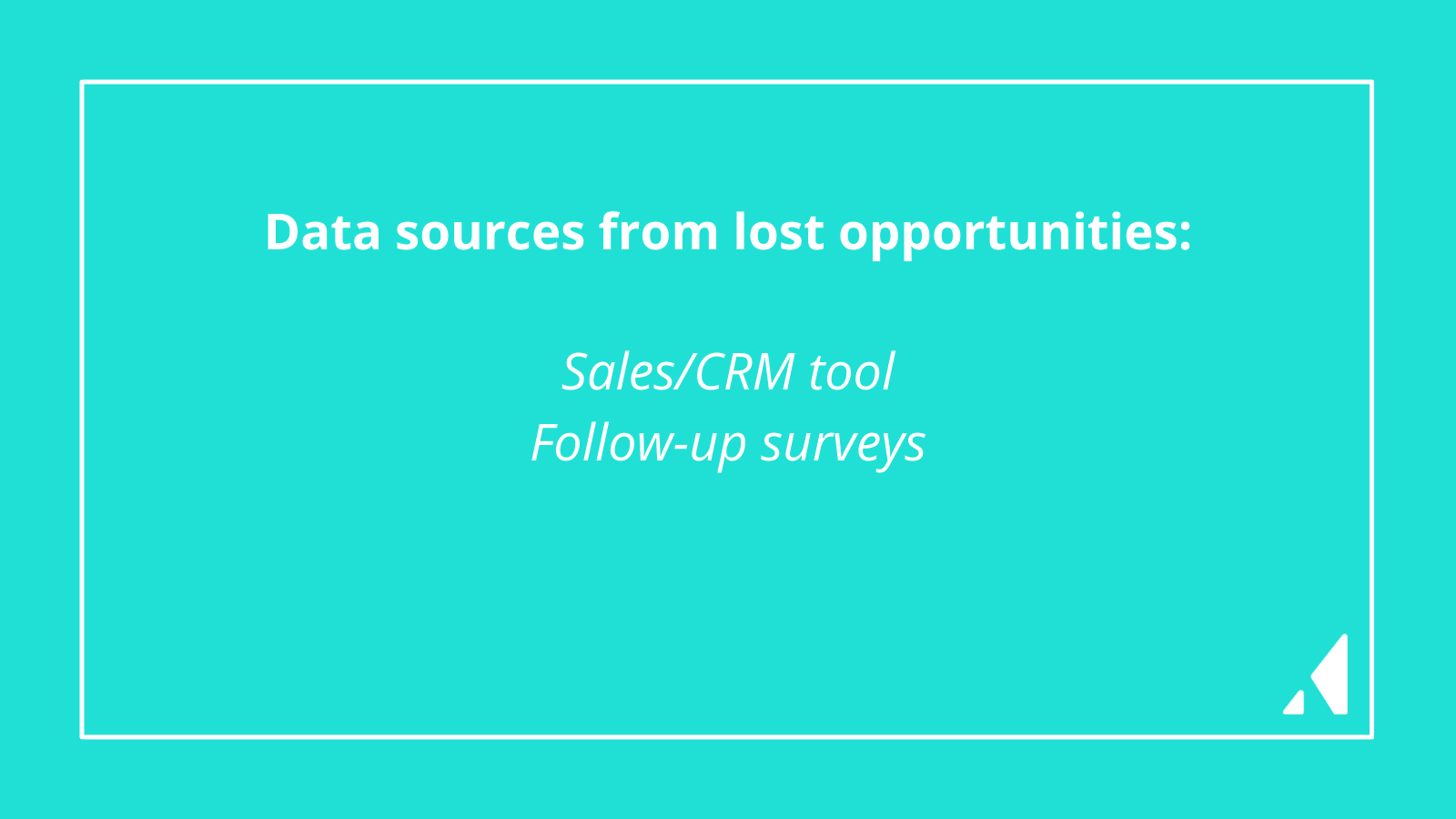Feature prioritization: 3 data sources to guide your product decisions

.png)

.png)
Feature requests may feel like a mountain you’ll never finish climbing. As soon as you’ve launched one new feature, other requests are waiting in the queue to be addressed. If you have a complex product, the sheer volume of requests can be overwhelming.
The question becomes: how do you decide which feature to tackle next?
The key is knowing how to collect and analyze feature request data. You’ll want to assess actual requests, but there are other data sources that should inform feature prioritization, too. With the right information at your fingertips, you can identify patterns that bring high-priority features to the forefront.

To build features users want, you need to have a pulse on two things: what your customers feel are shortcomings with your product and what features they expect you to add in the future.
However, customers often have a wide range of what they expect your product to do. You’ll be faced with requests that run the gamut, both in functionality and complexity. From all of these requests, you somehow need to come up with the “top requests” that drive your feature prioritization. You can’t address every single ask, but patterns in and the frequency of current customer feature requests will show you what your customers want and need the most.
You can directly access this information through your ticketing portal or customer surveys. Feature requests within tickets can be challenging to wrangle. Customers may not explicitly state their pain points or ask for new features. Surveys, on the other hand, give you more control and provide an easy way to organize responses.
In either method of data collection, you’ll need a tool for organizing your results—whether that’s an issue tracking software (like Jira), an internal database, or a spreadsheet. You’ll also want to build a process around organizing the request information in your tool, such as:
Of course, not all customers will tell you exactly what they need or want. They may ignore surveys or never contact your support team. Gasp!
In this case, product analytics can give you insights. By monitoring the in-app behavior of your customers, you can pinpoint areas that are underutilized. This may indicate that users do not see the benefit of a feature or that there is a UX problem. On the flip side, product analytics can also show where the usage is highest and where further product enhancements could bring a lot of value to your customers.

When a customer leaves your product, it’s never a happy moment. But there is a silver lining to churn: It provides plenty of insights for feature prioritization. If product functionality is the reason you lost the customer, investigate to find out what they expected from your product and how you can meet those expectations to prevent further churn.
You may be able to use a survey or directly ask the customer the reason that you’re losing their business, but these options aren’t always available. As an alternative, review tickets or interactions with your customer service team to identify the reasons for churn. In this data, you can look for complaints about or dissatisfaction with your product.
Use your CRM or customer data platform to track reasons for churn. Examples may include things like:
Within your CRM, create a field that allows you to select the reason for churn. If you identify a reason for churn for every customer, you can decide what this information is telling you. You may determine that the customer wasn’t a good fit for your product, based on their requested features. Or you may identify patterns that you want to address with feature prioritization.
For the latter, look for churned customers who were unhappy with your product’s functionality. Identify exactly where the product failed to meet expectations by tracking their past user engagement. If your product is designed to help users do their jobs, overall usage and app-specific tasks are indicators of engagement. When usage never takes off, it suggests that the customers never reached their “aha moment.”
You may notice that customers start their customer journey very engaged, but the engagement tapers over time. This decline means you need to dig into the customer data more to determine how to better engage with customers through new or improved product features.

When customers are comparing products, they often care most about features. Monitor why prospects choose other companies over yours to determine the features you need to prioritize.
Use your sales or CRM tool to track a loss reason from a pre-defined list of reasons. Much like using this tool for tracking reasons for churn, you should standardize and categorize the reason for each lost opportunity.
Your sales team may need to directly ask the prospect (assuming the prospect is forthcoming), if they don’t share this reason in a conversation. You can also try following up with lost leads after free trials. Send ‘em a survey, and quickly find out why their trial didn’t turn into a purchase.
You may notice through lost sales that the same product shortcomings come up over and over. Prioritizing features that fill the gaps will strengthen your ability to remain competitive.
At the same time, your product should not be a carbon copy of your competitors. What you offer should set you apart. Not to mention, hyped-up functionality is common. Jumping when competitors jump can lead to investing in a new feature that doesn’t have staying power. But as the market shifts and evolves, you do need to keep an eye on functionality that becomes “standard” or “expected” to stay in line with the competition.
Gathering sales loss data requires ongoing communication with your sales team and monitoring data from your free trials that fail to convert. It’s important to make the distinction between “bad fit” and “functionality” as a reason for the lost opportunity.
The most requested features may not always be feasible. You may not be able to prioritize common requests due to other factors, such as projects already in the queue or the resources you have available. At that point, you need to supplement the requests with other data, such as the scope of the project and the time/cost it would take to develop.
Balance the requests from customers against available development resources, knowing these two factors are sometimes at odds. Even if you can’t meet the requests right away, you’ll have gathered the information you need to guide your project plans in the future.